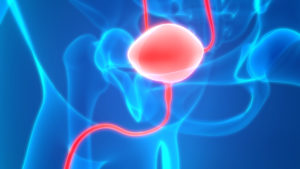The urethra is the small tube that carries urine from the bladder outside the body. The urethra is much longer in men since it runs the length of the penis. A urethral stricture is a narrowing of this tube that can occur anywhere from the bladder neck to the urethra opening. This narrowing can lead to serious urinary conditions if left untreated.
What causes a urethral stricture?
While strictures can occur in both men and women, they are more common in men due to the length of the male urethra (approximately 10 inches long). When men develop a stricture along the first two inches of the posterior urethra, this is called a posterior stricture. The posterior urethra is located deeper inside the body around the area of the bladder neck (bladder opening) – a stretch that is typically one to two inches long. If the restriction is found past this point, it is called an anterior stricture. Strictures are typically caused by scarring, injury, inflammation or an infection that causes the urethra to narrow.
- Injury – A stricture can be caused by trauma to the penis, scrotum or pelvis. Men or women can also sustain a straddle injury between the thighs. This can be caused by any forceful impact between the legs.
- Medical injury – The urethra can be damaged when a scope or other instrument is inserted during an in-office medical procedure or surgery. It can also be damaged by intermittent or long-term catheter use.
- Treatment for urethral or prostate cancer may cause a urethral stricture.
- Sexually transmitted diseases such as Gonorrhea or Chlamydia
- Inflammations, infections and swelling – Infections such as Prostatitis and Urinary Tract Infections (UTIs)
- Radiation therapy to the pelvic area
Urethral stricture symptoms
The most noticeable symptoms are related to a restriction of urine flow. Because several of these symptoms are also related to an enlarged prostate, it is important to be assessed by a Urologist.
These symptoms can include:
- Difficulty urinating, including the need to strain while urinating
- Painful urination
- Decreased urine flow or intermittent urination
- A feeling that the bladder has not been emptied after urination
- A need to urinate frequently
- Possible infection symptoms
- The inability to urinate – urinary retention (an emergency condition)
Diagnosis and treatment
Before starting treatment, the provider must confirm that a stricture is present, and the location of the stricture.
- Post-void residual test – This in-office test uses ultrasound imaging to show the physician how much urine remains in the bladder after a patient urinates.
- Digital rectal exam – This test allows the physician to analyze the condition of the prostate. If the prostate is enlarged, this may be affecting urine flow.
- Blood tests and urinalysis – Laboratory testing can be used to identify the presence of infection including sexually transmitted infections.
- Retrograde urethrogram – This procedure uses an x-ray machine to image the urethra as a contrast dye is instilled through a catheter through the penis. This imaging is able to locate the site and length of the stricture.
- Cystoscopy – This procedure uses a long, thin lighted scope to visually assess the urethra. The scope is slowly inserted into the urethra toward the bladder while the provider looks for possible strictures.
If a stricture is discovered, it can be treated in one of several ways depending on severity. The goal is to eliminate the stricture in order to restore urine flow. A urethral dilation can be performed to stretch the urethra. This procedure uses progressively larger dilators to widen the urethra. An internal urethrotomy uses a cystoscope to locate the restriction while a knife or laser is used to cut the stricture and restore urine flow. After the incision, a catheter is put in place to stabilize the area until it is able to heal. Patients many also undergo a urethroplasty, a surgical procedure to correct urethral defects.
If you are experiencing any changes in urine flow, we recommend a thorough assessment by a trained Urologist. Contact Urology Austin to schedule an appointment at an office close to you.

